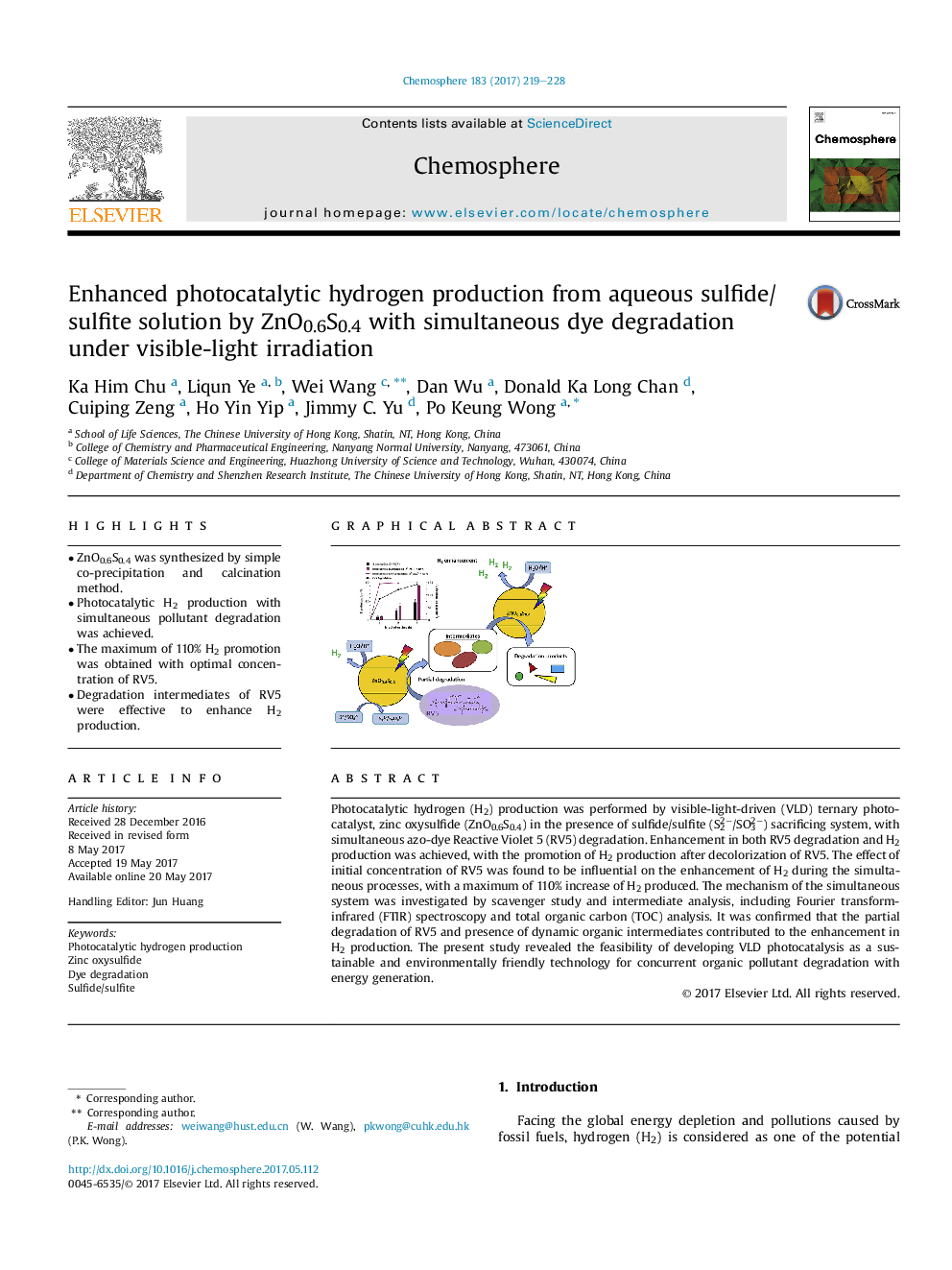| Article ID | Journal | Published Year | Pages | File Type |
|---|---|---|---|---|
| 5745987 | Chemosphere | 2017 | 10 Pages |
â¢ZnO0.6S0.4 was synthesized by simple co-precipitation and calcination method.â¢Photocatalytic H2 production with simultaneous pollutant degradation was achieved.â¢The maximum of 110% H2 promotion was obtained with optimal concentration of RV5.â¢Degradation intermediates of RV5 were effective to enhance H2 production.
Photocatalytic hydrogen (H2) production was performed by visible-light-driven (VLD) ternary photocatalyst, zinc oxysulfide (ZnO0.6S0.4) in the presence of sulfide/sulfite (S22â/SO32â) sacrificing system, with simultaneous azo-dye Reactive Violet 5 (RV5) degradation. Enhancement in both RV5 degradation and H2 production was achieved, with the promotion of H2 production after decolorization of RV5. The effect of initial concentration of RV5 was found to be influential on the enhancement of H2 during the simultaneous processes, with a maximum of 110% increase of H2 produced. The mechanism of the simultaneous system was investigated by scavenger study and intermediate analysis, including Fourier transform-infrared (FTIR) spectroscopy and total organic carbon (TOC) analysis. It was confirmed that the partial degradation of RV5 and presence of dynamic organic intermediates contributed to the enhancement in H2 production. The present study revealed the feasibility of developing VLD photocatalysis as a sustainable and environmentally friendly technology for concurrent organic pollutant degradation with energy generation.
Graphical abstractDownload high-res image (217KB)Download full-size image
